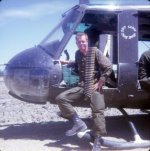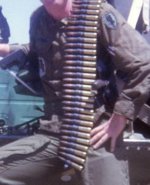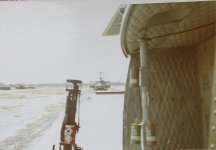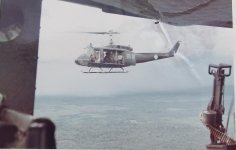Those are really some big-*** bullets for that revolver!
I'd hate to get hit by one of those .50 calibers. A lot of guys I worked with in the steel mill that were Nam vets said it was a real wake-up call to be 18/19 year old & seeing the damage they do to a human body. The stories they told...I turned 18 in '75 so I missed it, but had/have a lot of respect for those of you who were in the jungles & heck-holes over there.
The .50 caliber Browning machinegun was not primarily intended as an anti-personnel weapon, although certainly more than capable of serving in that role. The primary purposes were to engage vehicles (including lightly armored types), anti-aircraft use, and against materiel targets. During the Vietnam war era .50 MGs were standard equipment for many army units (infantry, armor, etc), included in the basic "load out" of equipment, so they were regularly used in many ways.
Ammunition types included ball, armor piercing, and tracer-incendiary. Each projectile weighed about 1.5 oz (~700 grains). and left the muzzle at close to 3000FPS. Massive impact energy and penetration abilities (compared to the more standard infantry weapons).
The M2 Browning heavy barrel machinegun, with tripod mount and traversing-elevation mechanism, is a massive and heavy piece of equipment (long time ago now, but I'm thinking about 100 lbs. total). Not easily transported by dismounted troops, usually requiring either a fixed position or a fairly heavy vehicle for mounted use or transport.
The M2 Browning is known for reliability and accuracy at extended ranges, usually considered useful against man-sized targets at a mile or vehicles at two miles of effective range.
For strictly anti-personnel uses the general purpose M60 7.62mm machinegun was much better suited. Capable of use by a single soldier, typically carried by every infantry squad for combat operations, and plenty of power and accuracy for these uses within about 1200 yards. In addition to the squad machinegunner there was usually an assistant gunner to carry extra barrel(s) and ammunition, and in many cases every member of an infantry squad carried additional ammunition for the machinegun in addition to their own basic weapon load.
For use in fixed position the M60 was also equipped with a separate tripod and T&E mechanism. Pintle-type mounts (steel post with swiveling head for gun mounting) were used in vehicles, some with armor to shield the gunner.







